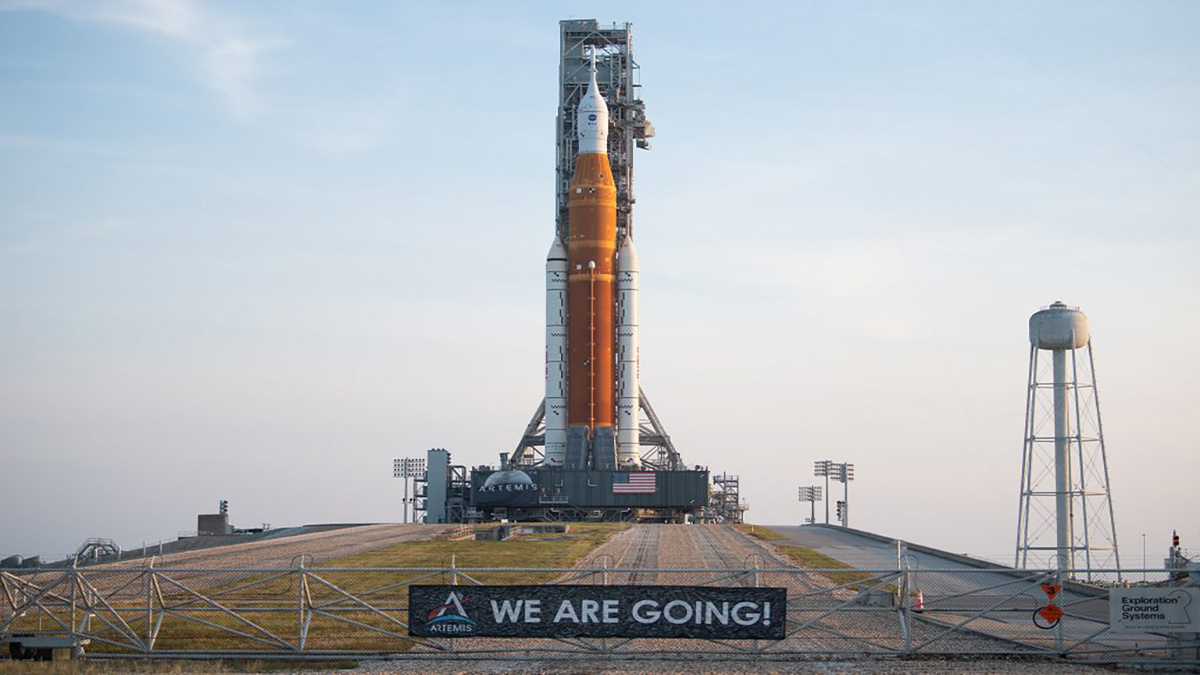Editor’s Note: This story was updated Nov. 16, 2022 to reflect the launch and updated mission timeline.
What to Know
- The Artemis 1 Mission to orbit the moon lifted off from Kennedy Space Center in Florida in the early morning hours of Nov. 16.
- The 26-day mission will be highlighted by an orbit around the moon, carrying the Orion un-crewed spacecraft 280,000 miles beyond Earth.
- Orion is scheduled for splashdown in mid-December after traveling 1.3 million miles.
A critical test flight that will provide a first look at NASA's new era of space travel begins with what should be a spectacular rocket launch from the Florida coast.
From there, critical moments and in-flight maneuvers will determine the success of the un-crewed Artemis 1 Mission, the first real step toward the first crewed moon landing since Apollo 17 in 1972.
Get top local stories in San Diego delivered to you every morning. Sign up for NBC San Diego's News Headlines newsletter.
Here's a timeline of key events that will follow the Artemis 1 launch on a journey to orbit the moon and the Orion spacecraft's return to Earth.
Flight Day 1: Liftoff
The giant 30-story tall Artemis I rocket will produce a maximum 8.8. million pounds of thrust when it launches from Kennedy Space Center in Florida. That's more power exertion than any rocket ever, NASA says.
Critical Moments After Liftoff
A precisely timed chain of events follows in the next roughly eight-minute window. The twin solid rocket boosters will separate, followed by the jettison of the service module fairing and launch abort system. The 212-foot tall core stage main engine will cut off before it too separates from the spacecraft.

Earth's gravity will be pulling on the rocket the entire time, requiring the launch system's engine to burn 735,000 gallons of liquid propellant to create 2 million pounds of thrust during its escape to the edge of space. Once their jobs are done, the solid rocket boosters and core stage will simply fall back to Earth.
Solar panels will deploy to generate power for Orion.
Setting a Course for the Moon
Orion is about 100 miles above Earth and still accelerating at more than 17,500 mph, but will still need more power to reach the moon. Once in low-Earth orbit, its next key step is the trans-lunar injection (TLI) -- a maneuver that will propel it 280,000 miles beyond Earth and 40,000 miles beyond the moon. That's farther than any spacecraft capable of crewed flights has ever gone. The maneuver starts with a blast of 24,750 pounds of thrust from the upper part of the rocket that will allow Orion to be captured within the moon's gravity.
That rocket stage will separate and deploy 10 small CubeSat satellites to help study the moon or travel deeper into space before they are consumed during an orbit around the sun.
The spacecraft will be traveling toward the moon for the next few days.
Flight Day 10-15: Orbit Around the Moon
Orion has made it, carrying its cargo to lunar orbit. On Flight Day 11, Orion is set to make history. It is due to exceed the record distance set by Apollo 13 of 248,655 miles beyond Earth by about 30,000 more miles.
Flight Day 16-26: Return Trip to Earth and Splashdown
Orion begins its return trip to Earth. Orion is now scheduled for a tentative splashdown on Dec. 11. The spacecraft will be hurtling toward Earth at 24,000 mph before gently splashing down in the Pacific Ocean near California.
How can I follow the Artemis Mission?
You can follow the 26-day mission with NASA's Artemis Twitter account. NASA also will provide coverage on its YouTube channel. NASA is offering several other ways to track the mission in real-time.
Will Artemis 1 have a crew?
No, unless you're counting the three 'moonikins' NASA assigned to the mission -- and they are noteworthy. The mannequins will be in the same astronaut suit that will be worn by future Artemis crews and have sensors that measure vibration and space radiation. One of the 'moonikins' is named Moonikin Campos after Arturo Campos, who was a key figure in bringing Apollo 13 safely back to Earth. You can follow their adventures here in comic book-style.
Why is NASA going to the Moon?
The Artemis 1 mission is the first flight test of the Space Launch System rocket and Orion, the stack of technology that will eventually send astronauts to the moon. Artemis II will send Orion and a crew farther than people have ever traveled from Earth. Artemis III is targeting the first crewed moon landing since Apollo 17 in 1972. The timeline for those missions depends largely on how things go with Artemis 1. The missions, named after the goddess of the moon and twin sister of Apollo in Greek mythology, are considered stepping stones to an eventual crewed mission to Mars.



